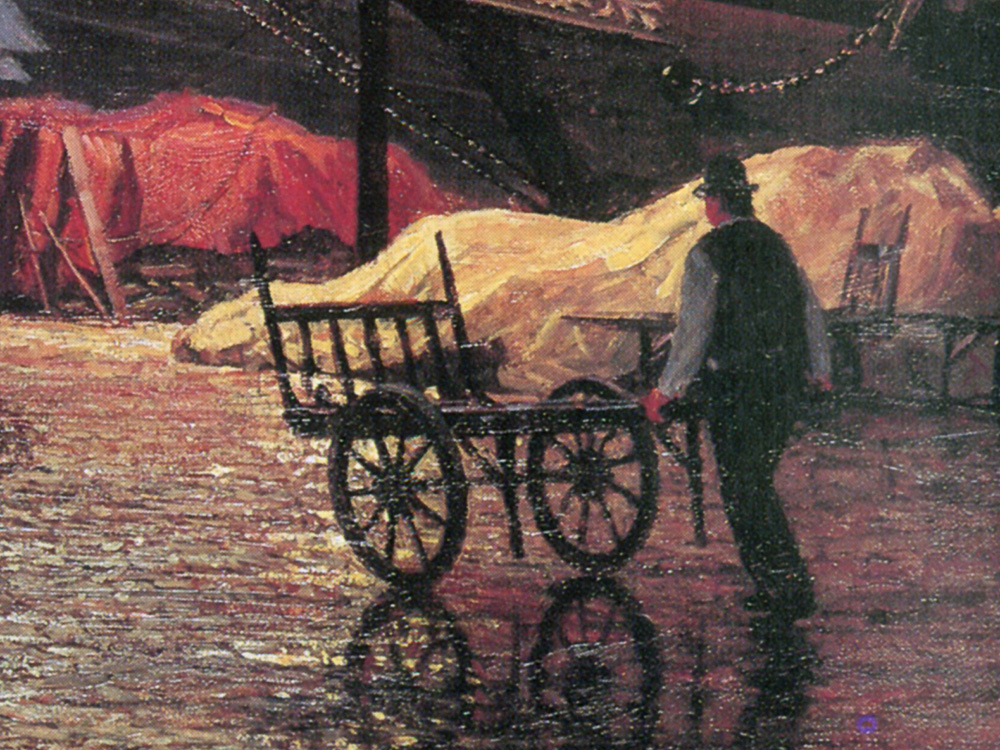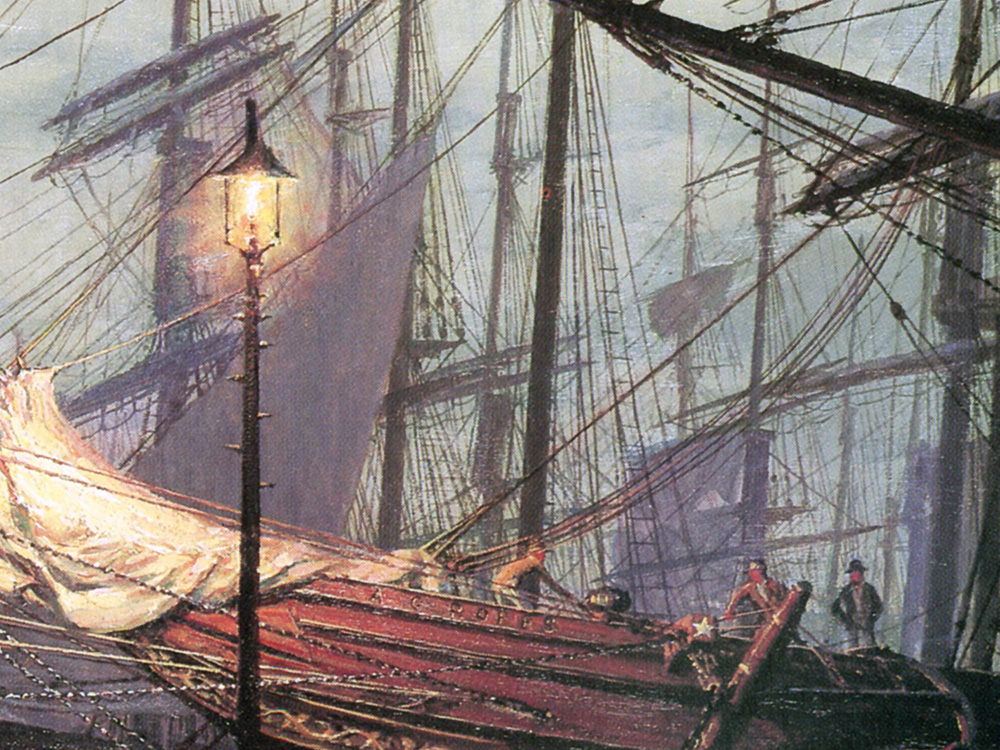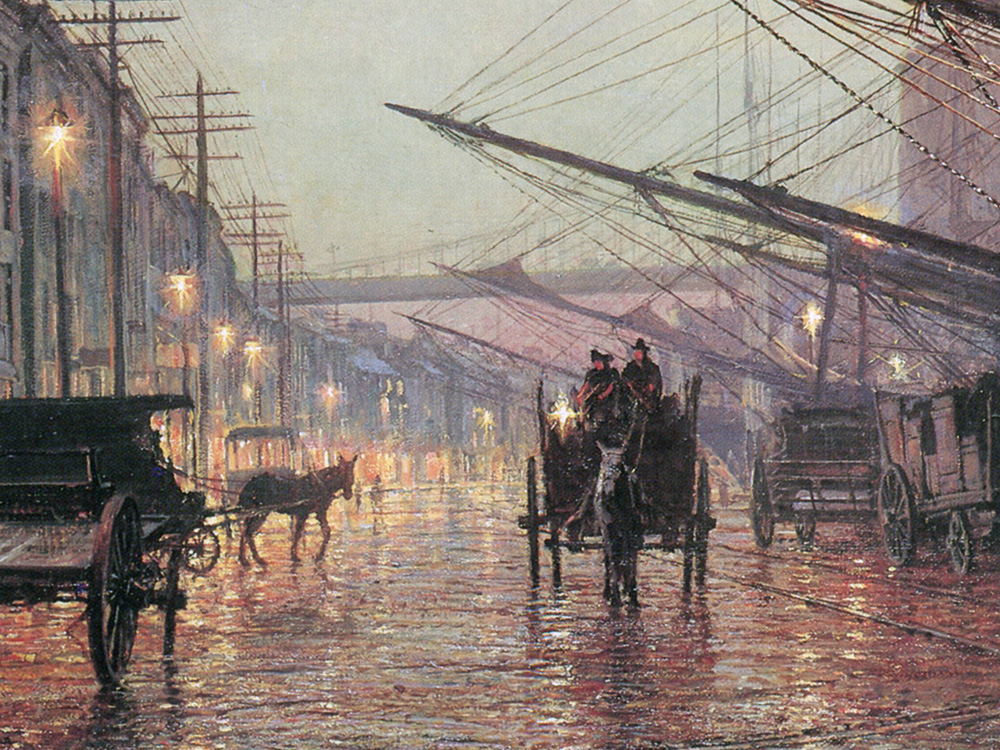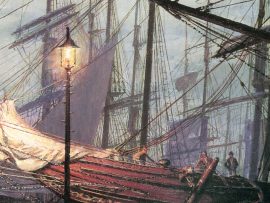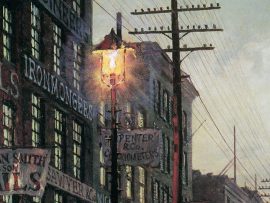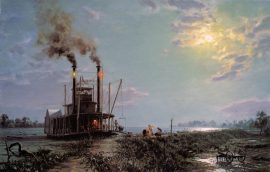New York: South Street, New York in 1880 (Gaslight)
$5,500.00 Original price was: $5,500.00.$4,950.00Current price is: $4,950.00.
I never tired of visualizing those old bowsprits stretching over South Street, as in the painting on page 117, and I asked myself, “What would be another way of handling that scene without painting the same picture?”
South Street by Gaslight in 1880 was my first attempt at tackling a moonlight subject and perhaps, judging by some critics' reactions to the painting, I had beginner's luck. Something about South Street, with all the vessels berthed bow-on to the street, immediately captures attention, and I knew that reflections in the wet cobblestones would work well. I had to keep the warm glow of the gaslights under control, balancing them against the cool hue of the pale moon. Painting a picture like this gets more exciting as it progresses. Each element contributes to the whole, building it shape by shape, until the real thing emerges before your eyes and you finally achieve the feeling of what it really must have been like.
On South Street during the day, there was a plethora of smells: coffee, tea, spices, oil, tar, and fresh fish gave the street the sense of international trade.
Now the sailmakers, ironmongers, carpenters, and ship chandlers have closed up for the night, but the fruit vendor on the corner catches a few stray, derby-hatted gentlemen. The last horse-drawn cabs clip-clop along the softly glowing cobblestones while around the corner, tipsy sailors probably reel from saloons to dance halls to spend the pay accumulated on long, hard ocean voyages.
In the late 1850s there was a national depression. The great clipper ships, with their massive sails requiring large crews, lost out to smaller and beamier workhorses with shorter masts and fewer sails. After the Civil War business was taken by steamships, which were considered more reliable.
Sailing vessels were not entirely eliminated, but South Street suffered deeply from the shift in transportation modes. The first-class transatlantic passengers now left from the new docks that had been built on the North River for the ocean liners. Market centers and terminals started sprouting in New Jersey.
In 1880 one could still see a “forest of masts” along South Street, but by 1900 steamers and barges were controlling more and more trade, and by 1907 hardly a single sailing vessel was hawsered to a South Street dock during the winter.
South Street was never the same again. The bowsprits were gone, but not forever. The South Street Seaport Museum, with its restored square-riggers, has brought us a glimpse of history, so the magic of the cobbled New York street still continues.
Out of stock
| Weight | 6.00 lbs |
|---|---|
| Catalog: | Stobart-110 |
| Artist: | John Stobart |
| Dimensions: | 23" x 33 1/4" |


